K-3rd Grade Desert Critters

|
|
This lesson begins with the exploration of a few of Remington’s desert scenes. By looking at the colors Remington used in them we can make an assumption about the temperature in the desert, and guess which types of animals may have lived there and what they would have eaten. Once we have a list of animals, students can decorate paper plate templates of desert animals.
|
K-3rd Grade Remington's Rattlesnake

|
|
Remington’s sculpture The Rattlesnake will be the study for this lesson. We will discuss the differences between a two dimensional work (painting, sketch, illustration) and a three dimensional work (sculpture). Through visual clues, we can tell the horse and rider encountered a rattlesnake. The horse's body language tells us what will happen next in the story. Students will each create a "rattlesnake" made from a spiral cut paper plate. The project will be 2Dwhen they're working and turn 3D when it's finished!
|
K-3rd Grade Painting a Nocturne
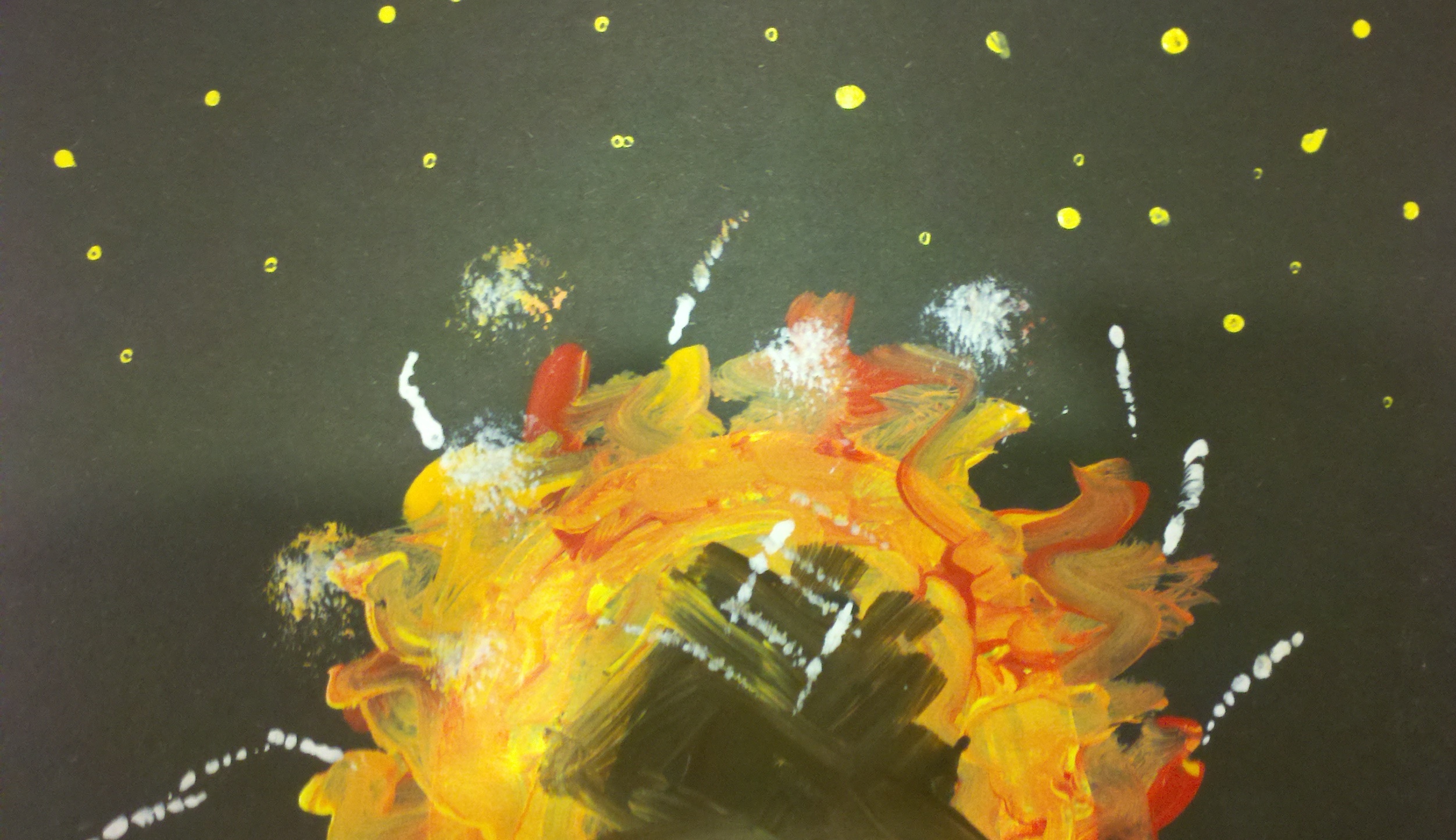
|
|
Remington enjoyed painting scenes that took place at night. He used the moon, stars and camp fires for the light source in his works. In this lesson, students will explore light sources in select Remington works and then through guided practice, each student will create their own nocturne painting.
|
4-6th Grade Understanding Color
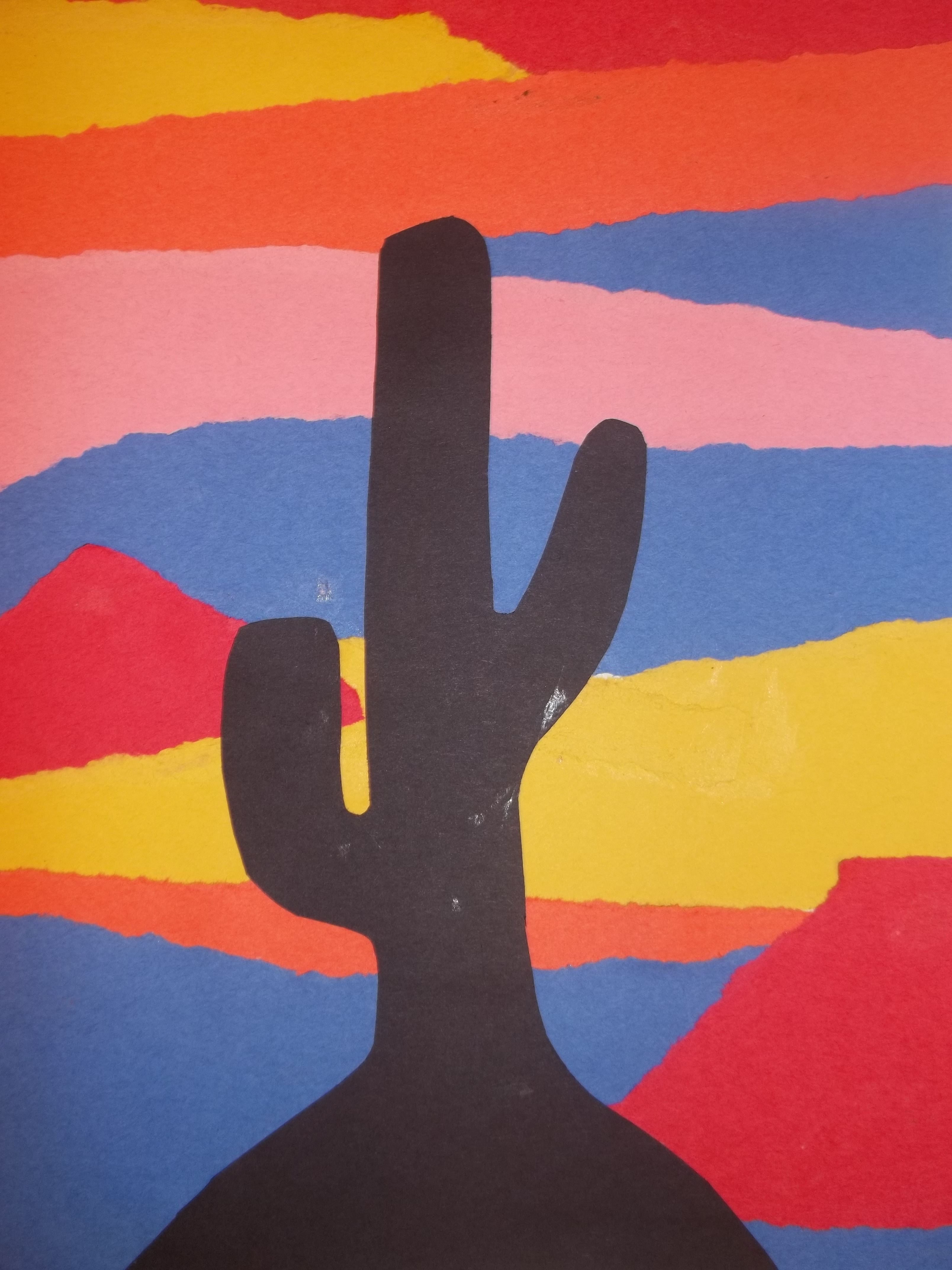
|
|
During this visit students will compare and contrast two paintings with different color schemes in order to make interpretations about color theory. We will compare Remington’s Untitled: Around the Campfire with Charge of the Rough Riders. Essential questions: how does color add to or create a feeling, create a mood, and enhance the understanding of the story lines in these pieces? Students will be asked to choose a subject matter comprised of a verb and a noun and illustrate their choice- Examples- Charging Bulls, Scorching Sun, Starving Cowboys. The final step will be to give the work a color scheme that represents feeling.
|
4-6th Grade History Through Remington's Eyes
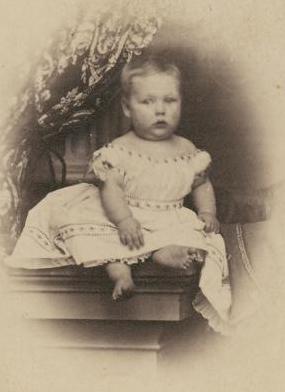
|
|
This lesson is coming soon! We've designed a fun activity for your class where kids can play a matching game between Remington's life events with a timeline you display on your wall. This will help kids relate the man to the local and U.S. history he knew so much about. After reading and discussing background information, kids will be using laminated pictures of his life with a Velcro backing in a race to compete and complete the time line of his life!
|
4-6th Grade Cowboy Collages
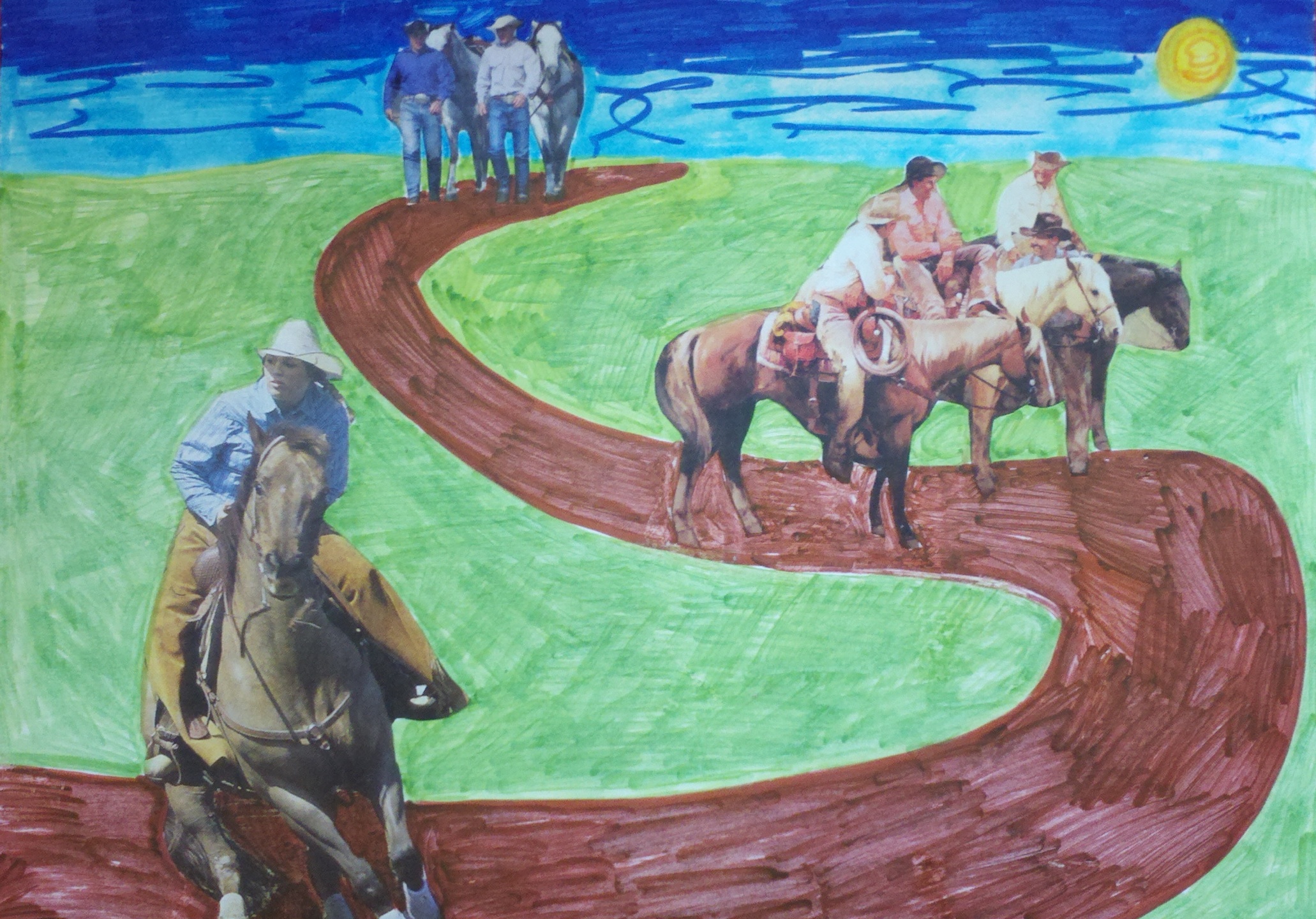
|

|
This visit involves an art lesson based on analyzing elements of art in Remington flatworks. After a discussion about how Remington created the illusion of depth on a 2D plain, students have some drawing time to try a technique themselves. Through guided practice they create a horizon line and add a large figure(s) in the foreground and a small figure(s) in the background. We will then scour western magazines and cut out figures (can include horses, cowboys, cacti …) to create a cowboy collage.
|
6-12th Grade Chapman and the Grand Canyon
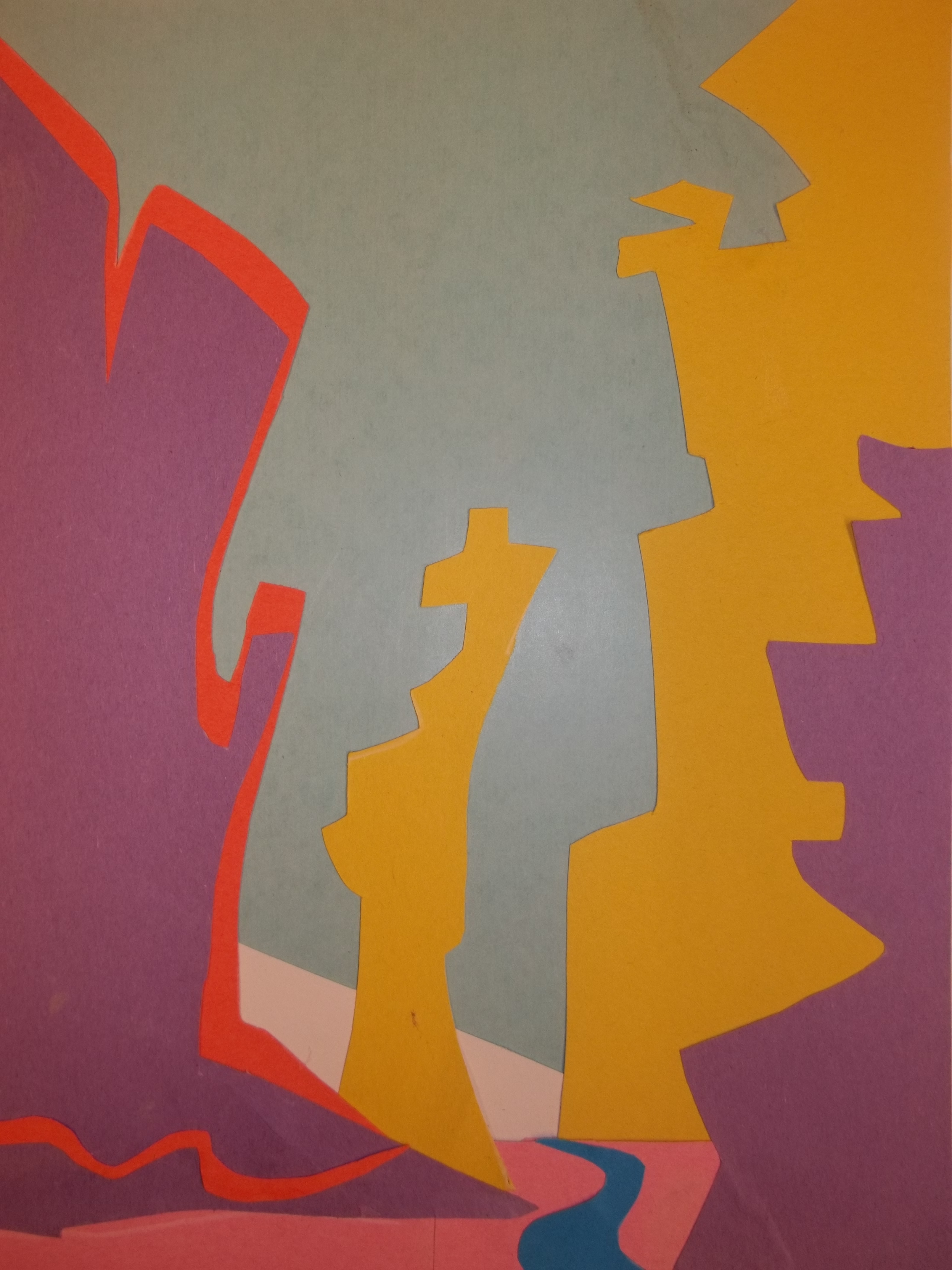
|
|
Charles Chapman was an artist born in Morristown NY who found inspiration to be an artist through Frederic Remington. Chapman was commissioned by the Museum of Natural History in NYC to paint a mural depicting the Grand Canyon. For our project, the students will be exposed to a newer type of medium than traditional painting when they create their collage art works based on Charles Chapman and the Grand Canyon.
|
6-12th Grade Remington and the West
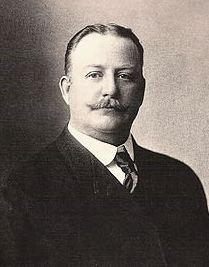
|
|
Remington was a master artist proficient in drawing, sketching, painting and sculpture. He enjoyed depicting many subjects in his art work including characters of the Wild West. For our project, students will be exposed to Remington’s work and be taught some skills on how to create Western characters in a fitting landscape, each leaving with a Western themed composition.
|
6-12th Grade Rosseel and the River
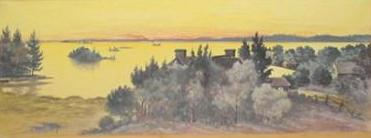
|

|
Frank Raymond Rosseel, native to Ogdensburg, was an artist who specialized in paintings and sketches. He enjoyed rivers, lakes, and old river boats and scenes as subjects in his art work. For our project, students will be exposed to water color painting using watercolor pencils and techniques and become inspired by viewing the St. Lawrence River from the Museum and by looking at Rosseel’s work regarding this river.
|
6-12th Grade Farnham and Horse Sculpting

|

|
Sally James Farnham was a sculptor who found her calling as an artist by coincidence- in 1901 she suffered an unknown malady and her husband brought her some modeling clay to help her pass the time while she recovered. By 1903 Sally’s studio at 1947 Broadway in New York was listed in the America Art Annual. When Sally needed sculpting advice, she contacted her friend and mentor Frederic Remington. For the project listed in this plan, students will be exposed to model horse sculpting using wire armatures, Sculpey clay, horse models and sculpting tools.
|
7-9th Grade History Through Remington's Eyes

|

|
This lesson has students looking at artifacts from Remington's life and times and also at the art works that he created. Remington wanted to be remembered throughout time and as a way to preserve memories of events, he often painted events in our history, preserving these movements and changes for later generations to come. By looking at artifacts from Remington's lifetime, we can see history remembered and alive in our hands and minds.
|
|
|
|
|
|
|
|
|
7-12th Buffalo Soldiers
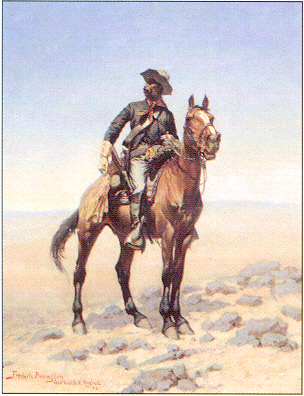
|

|
Description coming soon
|
10-12th History Through Remington's Eyes
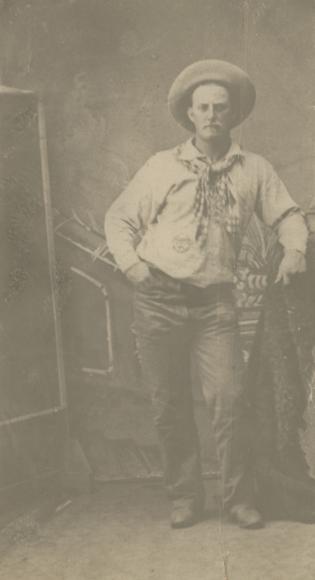
|

|
Description coming soon
|
















